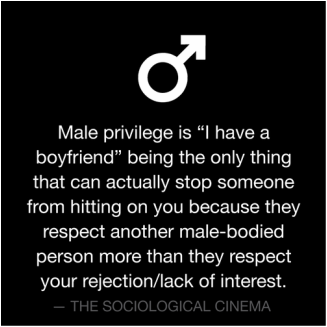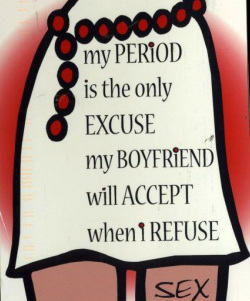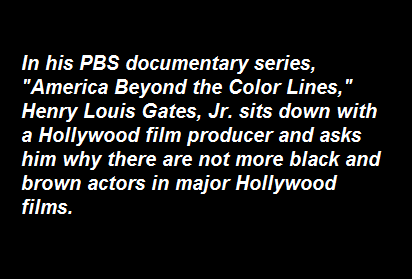 Image credit: Vincent Paolo Villano Image credit: Vincent Paolo Villano
In recent weeks, there has been an uptick in online discussions about whitewashing, due in no small part to the news that not a single person of color was nominated for an Academy Award this year. Soon after the nominations were announced, the hashtag #OscarsSoWhite began trending, where a number of people pointed out that this was in fact the second time in 20 years that the nominations list featured exclusively white actors. But pull back the Academy’s plush red carpet a little further, and one finds it is the fifth time in 30 years this has happened. Pull it back even further and one finds that in the years between 1927 and 2012, 99 percent of women who have won “Best Actress” have been white, and the same is true for 91 percent of men who have won “Best Actor."
The charge being leveled against the Oscars is of racism; that consciously or not, members of the Academy consistently fail to appreciate and honor the work of non-white actors. The basis for the charge is that there have been enough nominations and enough awards given to detect a bias. That is, if Oscars were awarded like lottery winnings, by sheer chance alone non-white actors would take home a more proportionate share of the little statues, so there is cause to believe that somehow the creep of racial bias is contaminating the nomination process. The fact that 94 percent of voting members are white doesn’t exactly ease fears that the Academy is playing racial favorites. My aim here is not to contribute to the growing criticism of the Academy of Motion Picture Arts and Sciences. While the concerns of a whitewashed Oscars ceremony are certainly justified, in my view this criticism risks missing the forest for the trees. The more one obsesses about whether members of the Academy are racist or whether the ceremony is a racist production, the easier it is to miss the whitewashed media environment the Oscars celebrate. In other words, the Oscars matter, but the ceremony should not be conflated with the institution, where there is a discernible preference for creating white-centered media, and the pactice of doing so is routinely defended as merely an economic calculation. There is some truth to the assertion that that Hollywood producers are simply giving people what they want, and as this clip from the PBS series America Beyond the Color Lines attests, many producers certainly believe this to be the case (skip ahead to the 17:00 mark). However, this explanation is far from complete, and I think there is cause for suspicion that the explanation shifts responsibility from the media makers to the media consumers. In order to grab the problem at its root and expose it, it's necessary to define what is meant by whitewashing. In its simplest form, whitewashing refers to the tendency of media to be dominated by white characters, played by white actors, navigating their way through a story that will likely resonate most deeply with white audiences, based on their experiences and worldviews. There are four distinct types of whitewashing. My claim is that Hollywood is guilty of producing all of these types, and equally important is the fact that Hollywood also creates the conditions by which their continued production becomes almost inevitable. First, whitewashing happens in films based on historical events, where white actors play the role of non-white characters. An exemplar of this first type is the classic movie, Birth of a Nation, where a number of white actors notoriously appeared in blackface. A more recent example is the film Argo, which recounts the CIA plot to rescue six Americans during the Iranian hostage crisis in 1981. In the film, Ben Affleck, a white man, plays the role of Tony Mendez, a Latino CIA officer who headed the operation. In addition to the incongruence between the real man and the actor, Tony Mendez's last name appears to be downplayed in the film. A variation on this first type of whitewashing occurs in adaptations of written works of fiction. This happens when a fictional character from a novel is originally drawn or described as a person of color, yet in the live action adaptation, the character becomes inexplicably white. Sometimes the white actor pretends to be of a different race, as when Johnny Depp pretended to be a Native American man in The Lone Ranger. Other times the character's original racial identity is entirely abandoned and the character simply becomes white, as appears to be the case with The Last Airbender. 
A second type of whitewashing can be observed in films that claim to be based on true stories. Here, the constellation of events that comprise a historical moment are reconfigured, forcing the audience to experience the story from a white perspective, as such, this type of whitewashing is a principal agent in shifting the public memory of real events. For example, Dances with Wolves ostensibly depicts a period of what has been euphemistically described by some historians as the Western Expansion, but is more accurately characterized as a patchwork of genocidal practices and policies by the United States government against the Native Peoples of North America. By inveigling its audience to experience this historical period through the eyes of a white protagonist, Dances with Wolves privileges the white experience. Dances, and other films like it, are whitewashed insofar as they succeed in prioritizing the white experience of witnessing this tragedy over the experiences of Native families who lived through it and died from it.
A third type of whitewashing can occur, even when the majority of characters in a film are played by black and brown actors. Here, the term refers to the observation that white actors secure all the major roles of a film, or they play the most well-rounded, complex characters of a film. Again, Dances of Wolves is an example of this type of film, but other examples include The Last Samurai and Dangerous Minds. Finally, it is also possible to speak of whitewashing as a description of a genre or a particular film industry. Any given film might be dominated by white characters because some stories just happen to be told about white people. Similarly, it sometimes happens that white characters are protagonists in stories, and white actors are sometimes just the best actors for major roles. However, these films might justifiably be called whitewashed if the majority of films produced over a given span of time fit this pattern. In other words, whitewashing cannot always be discerned on a film-by-film basis. It is only after stepping back and looking at the films produced over the span of a period of time that one is able to see that a disproportionate number of films are being written from a white perspective, mostly feature white characters, or that speaking roles are disproportionately awarded to white actors. There is an old cliche that the only color Hollywood executives see is green. Indeed, as I alluded to above, one common defense offered by those who make films is that they are simply giving the public what it wants. What is rarely discussed is that people are not simply born with fully formed preferences. The defense fails because Hollywood films are directly implicated in shaping people's racialized preferences in the first place. If it is true that the paying public truly wants white actors to dominate the silver screen, then Hollywood producers need to own up to the fact that they have played a central role in shaping that desire. Lester Andrist 
I recently shared a conversation with a woman who told me that when men hit on or harass her, sometimes the only thing she can say to make them stop is that she has a boyfriend. By coincidence, later that day I overheard another woman say that often the only way to make her boyfriend stop petitioning her for sex is to tell him she’s on her period.
To learn something about the invisible logic of patriarchy, simply listen closely to the strategies women deploy in order to refuse men. If “I have a boyfriend” is a tried and proven way of getting men to stop harassing, then boyfriends—i.e., men—are accorded respect, and how a woman is treated does not necessarily hinge on her own wishes. So whether a boyfriend really exists, women often fly a boyfriend flag high in order to turn away men in public spaces, but for those who return home to an actual boyfriend, the flag is of no use. To navigate this more intimate space, it seems that one way women can turn their boyfriends down without fear of retribution is to declare they’re menstruating, and here again, one can deduce the twisted logic of patriarchy. Women are anatomically dirty and undesirable at least once a month, an idea Hollywood movies regularly reflect and promote.  Source: http://postsecret.com/ Source: http://postsecret.com/
To recap, not only is it apparent that women are generally less respected than men, judging from the excuses many offer their intimate male partners, their desirability is somewhat contingent and fleeting. Moreover, while a man’s desire is sufficient justification for him to ask a woman for a date or sex, irrespective of whether the space is public or private, a woman’s desire to be left alone needs justification.
In 1986, Marie Shear famously wrote in her review of A Feminist Dictionary that “Feminism is the radical notion that women are people,” and my sense is a good many people read this quote as an inflammatory provocation or an exaggeration born from anger. It is neither. If part of what it means to be a person is to be regarded as the final authority in matters related to one’s own desire, then women are not yet regarded as people. Lester Andrist |
.
.
Tags
All
|

 RSS Feed
RSS Feed